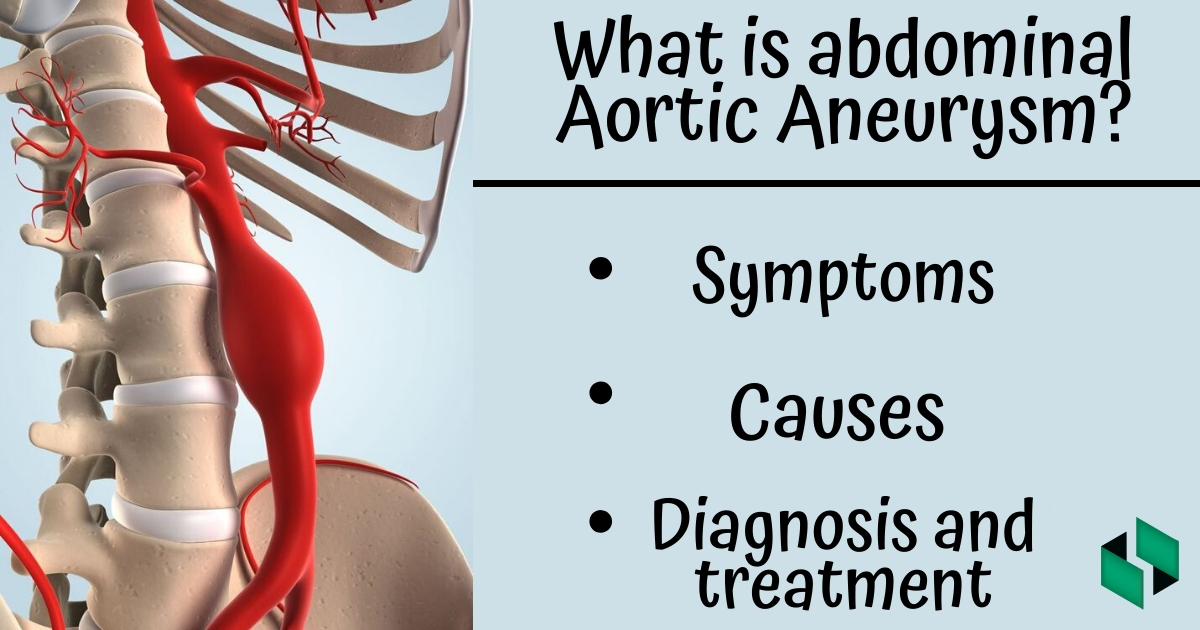Abdominal aortic aneurysm is one of the most common pathological processes among arterial system aneurysms.
The aorta is the largest blood vessel in the body, so a ruptured abdominal aortic aneurysm can cause life-threatening bleeding.
Symptoms
Abdominal aortic aneurysms often grow slowly without symptoms, making them difficult to detect. Some aneurysms never rupture. Many start small and stay small; others expand over time, some quickly.
If you have an enlarging abdominal aortic aneurysm, you might notice:
- Deep, constant pain in your abdomen or on the side of your abdomen
- Back pain
- A pulse near your bellybutton
Remember, any pain and especially sudden onset and strong quality is a noticeable symptom and you should see a doctor immediately.
Causes
A number of factors can play a role in developing an aortic aneurysm, including:
- Atherosclerosis
- High blood pressure.
- Blood vessel diseases.
- Infection in the aorta.
- Trauma.
Abdominal aortic aneurysm risk factors include: Tobacco use, age (These aneurysms occur most often in people age 65 and older), being male (Men develop abdominal aortic aneurysms much more often than women do), family history.
To prevent an aortic aneurysm or keep an aortic aneurysm from worsening, do the following: Don't use tobacco products, eat a healthy diet, keep your blood pressure and cholesterol under control, get regular exercise.
Diagnosis and Treatment
Abdominal aortic aneurysms are often found during an examination for another reason or during routine medical tests.
To diagnose an abdominal aortic aneurysm, doctors will review your medical and family history and do a physical exam. If your doctor suspects that you have an aortic aneurysm, specialized tests, such as the following, can confirm it: Abdominal ultrasound, CT scan, MRI
The goal of treatment is to prevent your aneurysm from rupturing.
Which treatment you have depends on the size of the aortic aneurysm and how fast it's growing.
Your doctor might recommend this option if your abdominal aortic aneurysm is small and you don't have symptoms.
Repair is generally recommended if your aneurysm is or larger than 4cm or if it's growing quickly.
Also, your doctor might recommend surgery if you have a leaking, tender or painful aneurysm.
Source:

